The AMD Radeon RX 590 Review, feat. XFX & PowerColor: Polaris Returns (Again)
by Nate Oh on November 15, 2018 9:00 AM ESTCompute & Synthetics
Shifting gears, we'll look at the compute and synthetic aspects of the RX 580. As this is the 3rd time we're seeing 'big' Polaris, there's nothing new to discuss, and with no other design changes we only expect to see the impact of increased clockspeeds.
Beginning with CompuBench 2.0, the latest iteration of Kishonti's GPU compute benchmark suite offers a wide array of different practical compute workloads, and we’ve decided to focus on level set segmentation, optical flow modeling, and N-Body physics simulations.
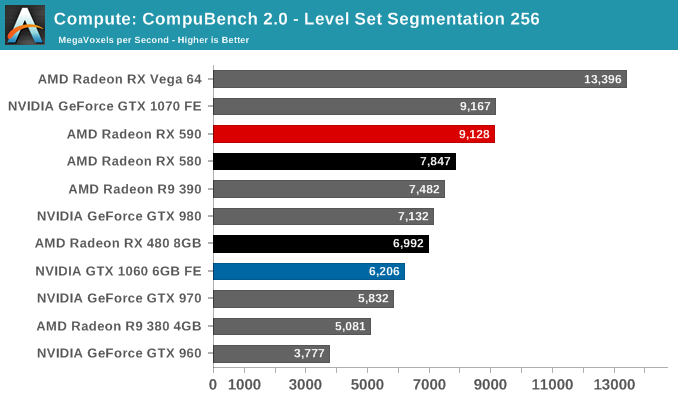

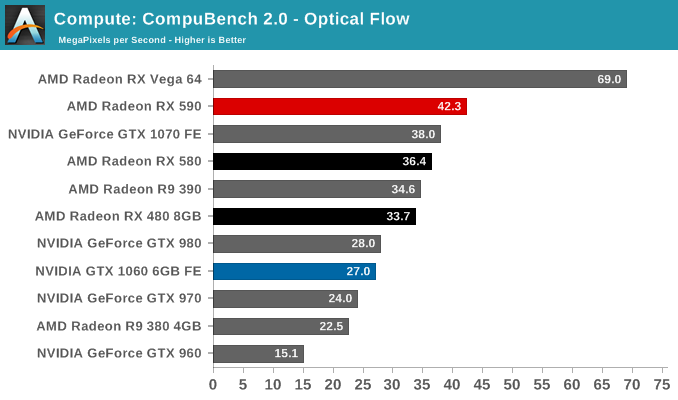
Moving on, we'll also look at single precision floating point performance with FAHBench, the official Folding @ Home benchmark. Folding @ Home is the popular Stanford-backed research and distributed computing initiative that has work distributed to millions of volunteer computers over the internet, each of which is responsible for a tiny slice of a protein folding simulation. FAHBench can test both single precision and double precision floating point performance, with single precision being the most useful metric for most consumer cards due to their low double precision performance.
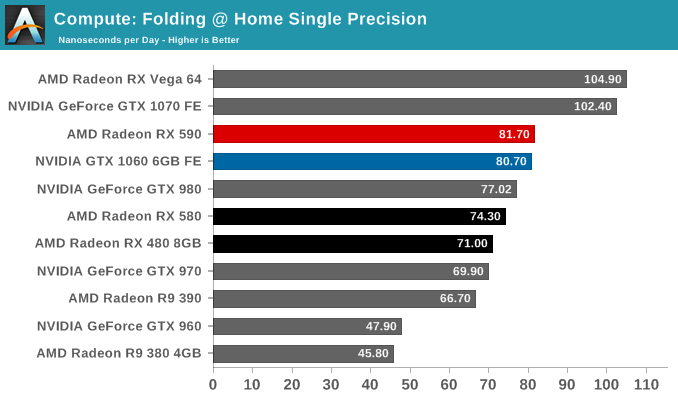
Next is Geekbench 4's GPU compute suite. A multi-faceted test suite, Geekbench 4 runs seven different GPU sub-tests, ranging from face detection to FFTs, and then averages out their scores via their geometric mean. As a result Geekbench 4 isn't testing any one workload, but rather is an average of many different basic workloads.
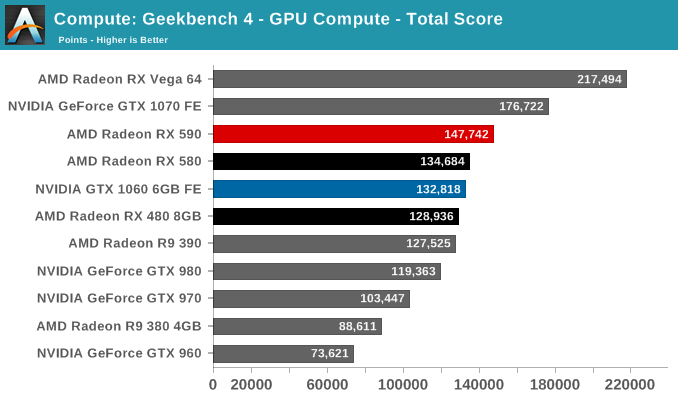
We'll also take a quick look at tessellation performance.

Finally, for looking at texel and pixel fillrate, we have the Beyond3D Test Suite. This test offers a slew of additional tests – many of which use behind the scenes or in our earlier architectural analysis – but for now we’ll stick to simple pixel and texel fillrates.
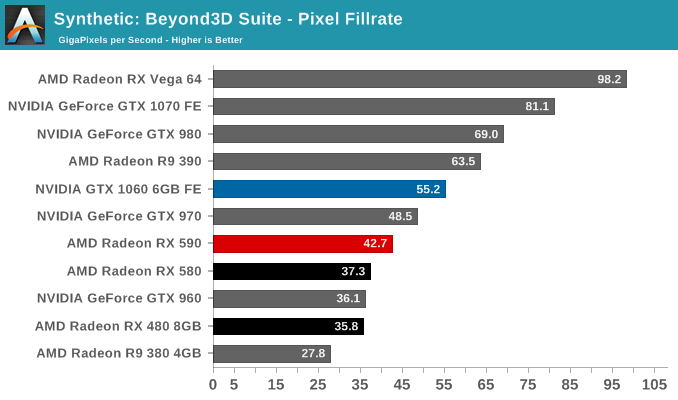











136 Comments
View All Comments
AMD#1 - Tuesday, November 20, 2018 - link
Well, they released a card this year for the consumer market. My hopes are that Navi will be a better option against NVIDIA RTX, good that Radeon will not support RT. Let NVIDIA first support DX12 with hardware shader units, instead of hanging on to DYING DX11.silverblue - Wednesday, November 21, 2018 - link
A couple of reviews seem to be showing the Fatboy at similar power consumption (or slightly higher) levels to the 580 Nitro+ (presumably the 1450MHz version) and Red Devil Golden Sample. That's not so bad when you factor in the significantly increased clocks, but the two 580s hardly sipped power to begin with, and basic 580s don't really perform much worse for what would be much lower power consumption. AMD has a product that kind of bridges the gap between the 1060 and the 1070, but uses more power than a 1080... hardly envious, really. The Fatboy has rather poor thermals as well if you don't ramp the fan speed up.The 590s we're getting are clocked aggressively on core but not on memory; what would really be interesting is a 590 clocked at 580 levels, even factory overclocked 580 levels. Would it be worth getting a 590 just to undervolt and underclock the core, make use of the extra game in the bundle (once they launch, that is), and essentially be running a more efficient 580? I'd be tempted to overclock the memory at the same time as that appears to be where the 580 is being held back, not core speed.
silverblue - Wednesday, November 21, 2018 - link
I'll be fair to the Fatboy; it does have a zero RPM mode which would explain the thermals.WaltC - Sunday, December 2, 2018 - link
I just bought a Fatboy...to run in X-fire with my year-old 8GB RX-480 (1.305GHz stock)...! As I am now gaming at 3840x2160, it seemed a worthwhile alternative to dropping $500+ on a single GPU. Paid $297 @ NewEgg & got the 3-game bundle. I read one review by a guy who X-fired a 580 with a 480 without difficulty--and the performance scaled from 70%-90% better when X-Fire is supported. Wouldn't recommend buying two 590's at one time, of course, but for people who already own a 480/580, the X-Fire alternative is the most cost-effective route at present. Gaming sites seem to have forgotten about X-Fire these days, for some reason. Of course, the nVidia 1060 doesn't allow for SLI--so that might be one reason, I suppose. Still, it's kind of baffling as the X-Fire mode seems like such a no brainer. And for those titles that will not X-fire, I'll just run them all @ 1.6GHz on the 590...Until next year when AMD's next < $300 GPU launches...! Then, I may have to think again!quadibloc - Friday, December 7, 2018 - link
Oh, so Global Foundries does now have a 12 nm process? I'm glad they're doing something a little better than 14 nm at least.